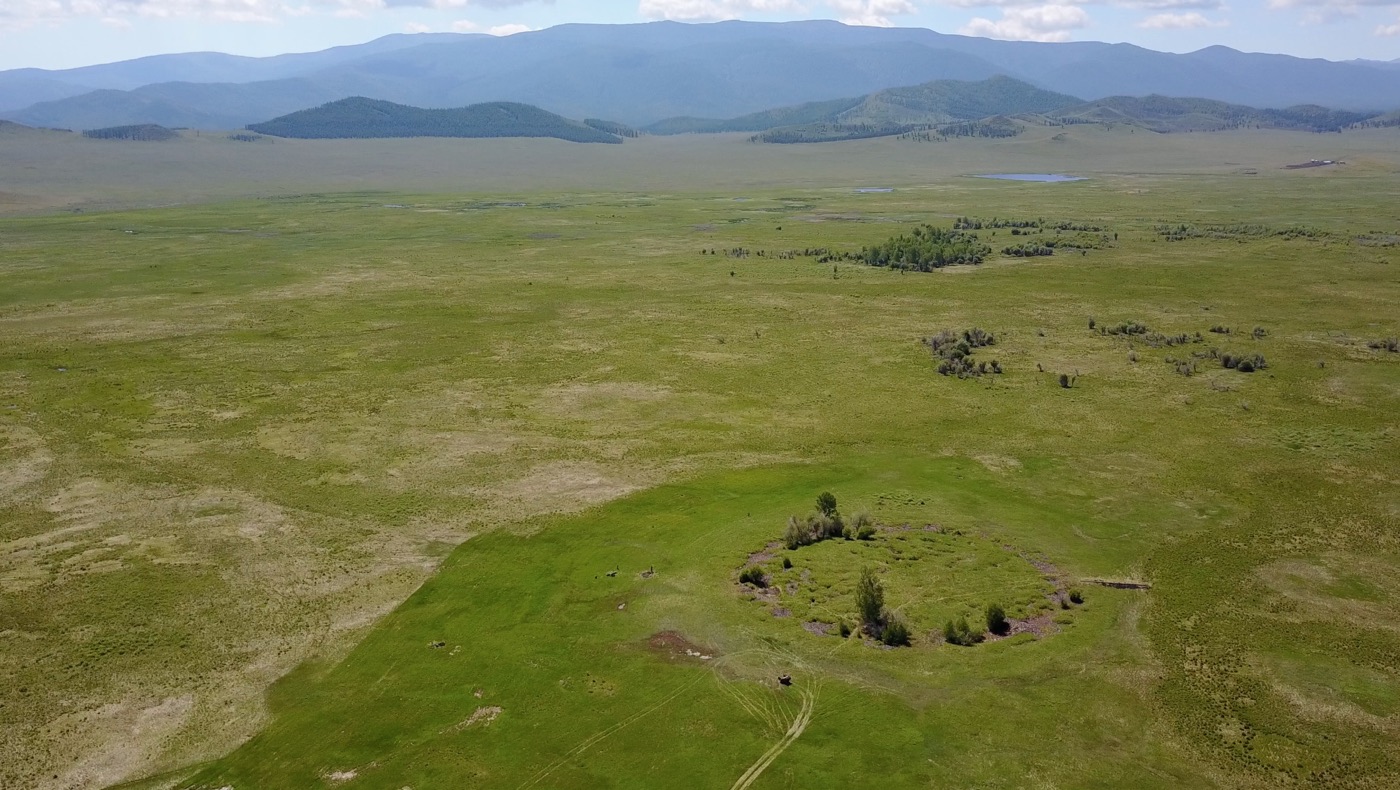Untouched 'frozen tomb' discovered in Siberia
The tomb likely holds the remains of Scythian royals.

Archaeologists working in southern Siberia have identified an untouched, frozen burial mound that they say might contain the graves of Scythian royals. The monument — which is more than 2,800 years old and wider than the length of a football field — could be the oldest and largest in the region.
The Scythians were horse-riding nomads who dominated a vast stretch of the central Eurasian steppes and grasslands from about the ninth century B.C. to about the first century B.C. Among outsiders, they had a reputation as fearsome warriors. Writing in the fifth century B.C., Greek historian Herodotus claimed that after battle, the Scythians made cloaks from their victims' scalps and drinking cups from their skulls.
While the Scythians did not build any settlements, they did leave behind huge burial mounds, which they filled with gold jewelry, weapons, richly decorated cups (some with traces of drugs like opium) and other grave goods. Because many of these mounds are built on permanently icy soil, some of the burials are quite literally frozen in time; archaeologists have even discovered Scythian ice mummies.
Related: In photos: Boneyard of Iron Age warriors
Since the 1970s, archaeologists have been excavating several burial mounds, called kurgans, in the Uyuk Valley in Tuva, a Russian republic, just northwest of Mongolia. The area is sometimes called the Siberian "Valley of the Kings," referring to the place where pharaohs were buried for 500 years in ancient Egypt.
The monuments could be more than 330 feet (100 meters) in diameter. During excavations at the mound known as Arzhan 2 in the early 2000s, archaeologists found an amazingly intact tomb of a man and woman lying side by side among more than 9,000 golden objects.
Gino Caspari, an archaeologist at the University of Bern, was searching through high-resolution satellite images of the area around this series of tombs. He identified a circular structure in the middle of a swamp along the Uyuk River. From the images, Caspari could see that the mound likely had a radial structure made of wooden beams or logs beneath a thick layer of stones.
Sign up for the Live Science daily newsletter now
Get the world’s most fascinating discoveries delivered straight to your inbox.
The next step was to visit the monument, and a Swiss-Russian expedition then traveled to the site in 2017. According to their recent report in the journal Archaeological Research in Asia, the team discovered that the "frozen tomb" seems to have been spared from looting because of its hard-to-access location.
"The kurgan is five arduous hours by off-road vehicle from the nearest settlement," Caspari said in a statement from the Swiss National Science Foundation, which funded the research.
The team took samples of wood from the mound and, through radiocarbon testing, learned that these beams date back to the ninth century B.C., making it one of the oldest in the region, the researchers wrote. They also measured the mound and found that it stretched 460 feet (140 m) in diameter.
"No other frozen kurgans of this size are known in Eurasia," Caspari and his colleagues wrote. "It is, however, also [in] danger because with the global rise in temperature these treasures are in immediate risk of being lost. Large excavation campaigns need to be carried out throughout the next years to excavate the complete object and preserve the knowledge we can gain from it."
Originally published on Live Science.










